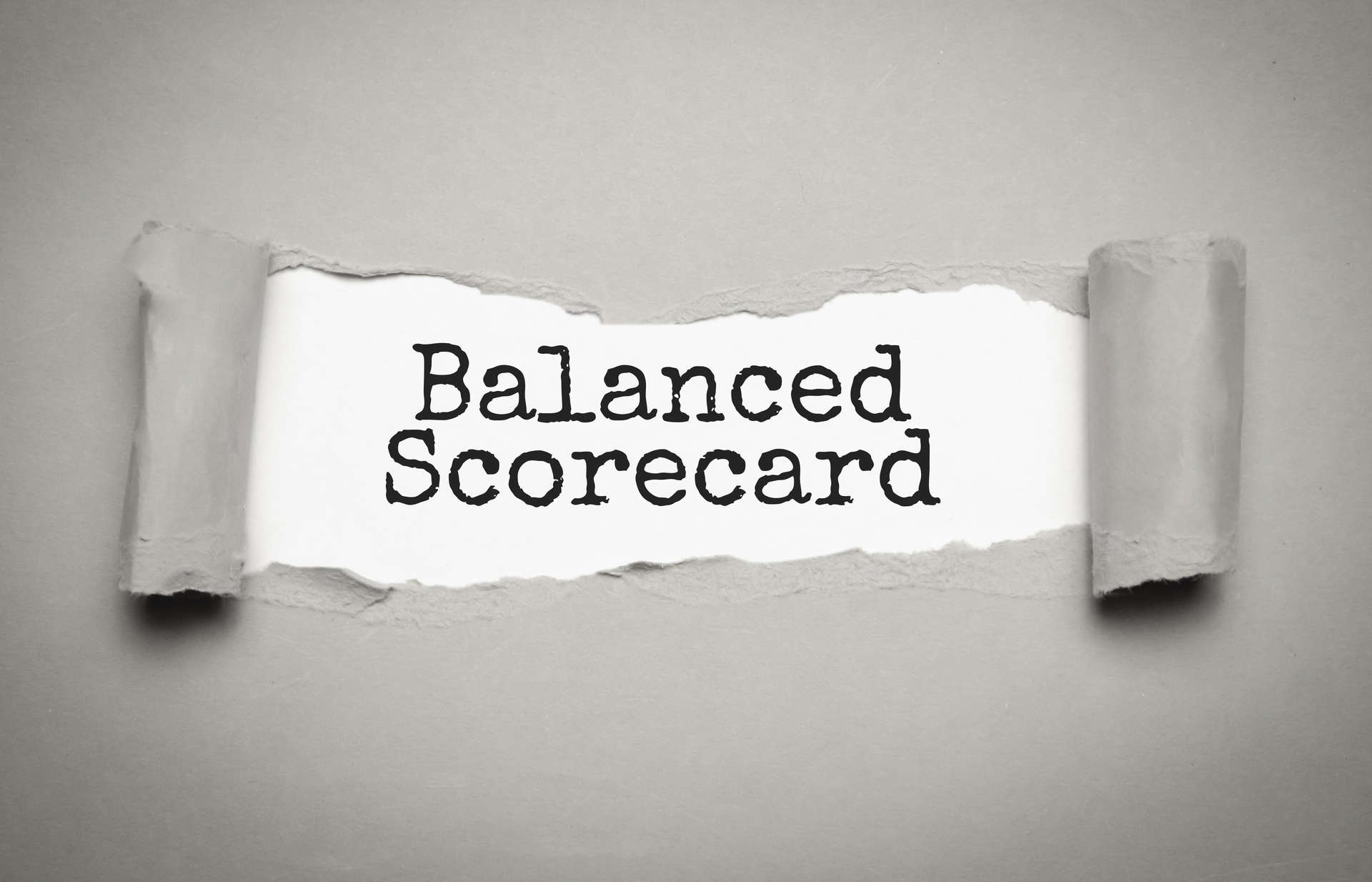Research Review of The Balanced Scorecard

History of the Balanced Scorecard
The Balanced Scorecard was first developed and introduced in 1992 by Professors Robert Kaplan and David Norton from the Harvard Business School. They originally published their work in 1992 in the Harvard Business Review (HBR) and, as far as we can ascertain, have never published their work through a peer reviewed journal.
Nonetheless, The Balanced Scorecard has become one of the most widely used, researched and influential management tools in the last 30 years and has been widely adopted by consultancies and organisations in that time. It is estimated that, by 2008, the usage of The Balanced Scorecard had reached its height, with 53% of companies around the world using it as a regular part of their strategic management analysis suite. However, by 2018 its use had declined to approximately 29% of organisations globally. Given that almost one third of organisations are still using it almost 30 years after its introduction is testament to its longevity.
Further, since 2019 The Balance Scorecard has been either the focus of or used in 8,557 research studies. The Balanced Scorecard is the only management tool to have remained on the list of top 25 management analysis tools since the 1990s.
Aim of the Balanced Scorecard
The aim of The Balanced Scorecard is, as the name suggests, to provide a balanced and well-rounded view of an organisation’s performance by considering financial, customer, internal processes and learning and growth perspectives.

The Balanced Scorecard – an overview
The Primary Point
The primary point of The Balanced Scorecard is to help organisations align their activities with their strategic goals and objectives.
99% of everything you are trying to do…

…has already been done by someone else, somewhere – and meticulously researched.
Get the latest research briefings, infographics and more from The Oxford Review – Free.
The Framework
The tool provides a way to measure and monitor progress. The framework takes into account both financial and non-financial factors that contribute to the success of an organisation based on four ‘perspectives’:
- Financial perspective, which looks at the financial outcomes that result from an organisation’s activities. This perspective focuses on the financial metrics that tend to be important to the organisation’s stakeholders, such as revenue growth, profitability and return on investment.
- Customer perspective, which examines the customer outcomes that result from the organisation’s activities and focuses on the metrics that are important to the organisation’s customers, such as customer satisfaction, customer loyalty and market share.
- Internal processes perspective, which looks at the internal processes that are considered to be important for the organisation’s success. This perspective focuses on metrics that measure the effectiveness and efficiency of these processes, such as cycle time, process quality and capacity utilisation.
- Learning and growth perspective, which considers the learning and growth outcomes that result from an organisation’s activities and focuses on metrics that measure the organisation’s ability to learn and grow, such as employee satisfaction, organisational culture and training and development.
Examples of balanced scorecards can be found on the internet, especially in the images section of most search engines.

A new study
A new (2023) meta-analysis of the last 30 years of research looking at the effectiveness of The Balanced Scorecard has been conducted by researchers from the Mack Robinson College of Business, Georgia State University and the College of Business and Economics at California State University, both in the US.
Findings
The study found that:
- Despite more than 30 years of research the empirical evidence about the impact the use of The Balanced Scorecard has on organisational performance is contradictory and conflicting. Roughly equal numbers of studies find that the use of The Balanced Scorecard has a positive impact on organisational performance and the rest that it has either no impact or a negative impact on performance. There is no clear research evidence that the use of The Balanced Scorecard improves performance (however, see 5 below).
- Where it is considered that the use of The Balanced Scorecard has had a positive impact on organisational performance the level of its influence on performance is moderate.
- In effect, The Balanced Scorecard is drawing causal links between the four perspectives and organisational performance. The claim by Kaplan and Norton was that competitive advantage could be gained by articulating the organisation’s goals and the drivers of those goals. Senior leadership can then focus the resources of the organisation through the four perspectives to achieve the goals.
- Two years after the original publication of The Balanced Scorecard in the HBR, they added that The Balanced Scorecard measures need to be linked to a strategy map. A strategy map is a visual illustration of a company’s strategy that showcases the relationship between cause and effect across the four perspectives. The idea of a strategy map is to present the objectives, metrics and projects of the company’s strategy in a clear and concise manner, so that it is easy to communicate and act upon. The strategy map links the company’s vision and strategy to its daily operations, enabling the company to align its actions with its strategy and monitor its progress towards its goals. Typically, a strategy map is presented in a flowchart style and links the objectives of the financial, customer, internal processes and learning and growth perspectives, offering a complete view of the company’s strategy. Again, examples of strategy maps can be found on the internet, especially in the images section of most search engines.
- Many implementations of The Balanced Scorecard have been found not to include the learning and growth perspective or not to be linked to a strategy map. These two factors appear to account for many of the null findings about the effectiveness of The Balanced Scorecard. The study found that:
a. The development of a strategy map in conjunction with a balanced scorecard is critical.
b. The full scorecard needs to be used.
c. The commitment of the senior leaders to The Balanced Scorecard and strategy map has also been found to be crucial.
d. Often, the development of The Balanced Scorecard is not inclusive. It has also been found that there needs to be broad participation from across the organisation and its stakeholders for The Balanced Scorecard to have a positive impact. - There is a serious omission on the scorecard, in that human relations, relationships or the complexity of the human networks and human decision-making are not factored in in most balanced scorecards.
Primary reference
The Levels of Organisational Development
Be impressively well informed

Get the very latest research intelligence briefings, video research briefings, infographics and more sent direct to you as they are published
Be the most impressively well-informed and up-to-date person around...
